| Author |
Message |
    
richarddurgee
Senior Member
Username: richarddurgee
Post Number: 1025
Registered: 11-2001

| | Posted on Friday, March 03, 2006 - 09:22 am: | 




|
8 # Whats The Name
1914 This was the smallest engine in their line at 3Hp.
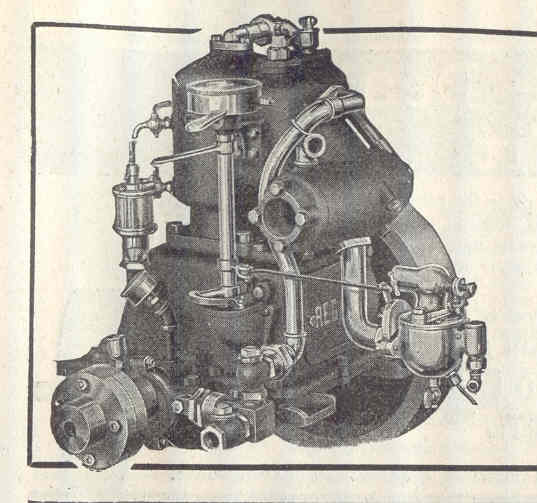 |
    
richarddurgee
Senior Member
Username: richarddurgee
Post Number: 1027
Registered: 11-2001

| | Posted on Saturday, March 04, 2006 - 12:00 am: | 




|
Regal
 |
    
searcher
Senior Member
Username: searcher
Post Number: 375
Registered: 10-2004
| | Posted on Tuesday, December 01, 2009 - 05:52 pm: | 




|
Richard Durgee posted a similar Regal ad some time ago that shows this type of oil cup. How did they work? At first glance, they are counter intuitive.
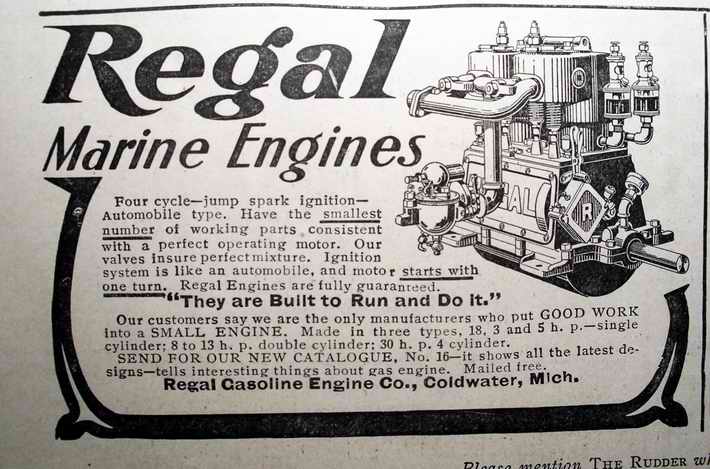
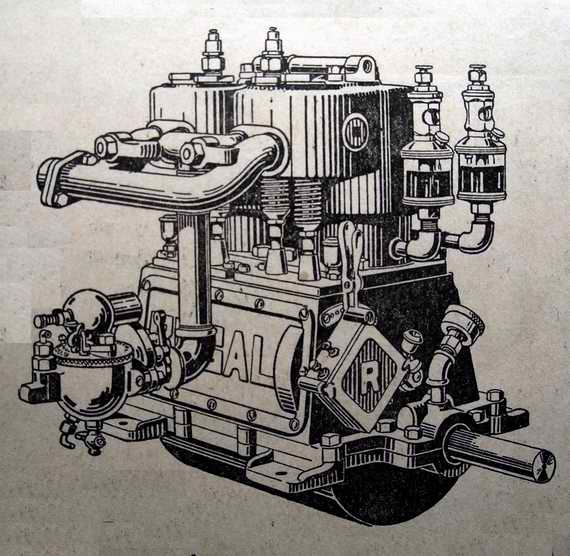 |
    
richarddurgee
Senior Member
Username: richarddurgee
Post Number: 2247
Registered: 11-2001
| | Posted on Wednesday, December 02, 2009 - 06:00 am: | 




|
*
Oil injectors ! Always thought they would be ideal to mount on a bar, fill with Jack Daniels or scotch etc, when wanting a taste lift the round flat disc at the very top pull up the plunger and give it a few strokes (depending on how stiff you like it) Seems a good practical conversation piece, after 80-90 years wondering if you could ever get rid of the taste of the 30 Wt ?
** |
    
ernie
Senior Member
Username: ernie
Post Number: 1111
Registered: 01-2002

| | Posted on Wednesday, December 02, 2009 - 07:58 am: | 




|
Looks to me like the guy making the cut for printing got something upside down. |
    
richarddurgee
Senior Member
Username: richarddurgee
Post Number: 2248
Registered: 11-2001
| | Posted on Wednesday, December 02, 2009 - 01:30 pm: | 




|
*
This Lathrop has the dual drip oilers up top, with two crankcase pre lube oil injectors, same purpose as Regal but a bit different design !
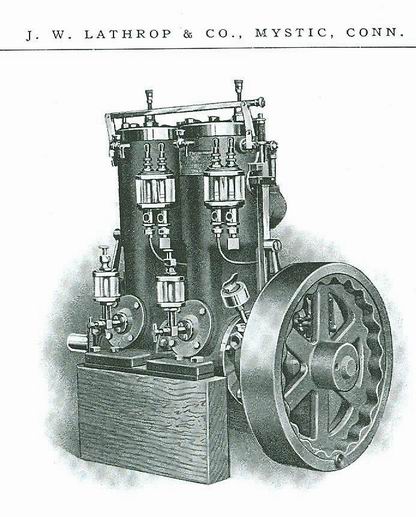
** |
    
richardday
Senior Member
Username: richardday
Post Number: 830
Registered: 11-2003

| | Posted on Wednesday, December 02, 2009 - 10:00 pm: | 




|
Seems to me the oiler pumps on the Lathrop are correct. Same for the dual drip oilers but the Regal seems strange. I think Ernie is correct. I don't see how they could work the way they are drawn. |
    
searcher
Senior Member
Username: searcher
Post Number: 376
Registered: 10-2004
| | Posted on Thursday, December 03, 2009 - 12:45 am: | 




|
I am not as well versed in this stuff as most of you are but I'm slowly learning. Like I said, the oil cups on that Regal seem counter intuitive. But so didn't this Viking Pinnacle oil cup I bought off eBay. When I took the Pinnacle apart I thought the center tube had been turned upside down, i.e. that the hole in the tube for the oil to pass through was at the top of the reservoir rather than at the bottom of the reservoir where it should be. In other words, there was no way in hell any oil could get to that passage unless the cup was constantly full. Then I noted that the needle valve was made to work with the oil passage in that position which added to the puzzle. The Pinnacle looked new so I figured maybe somebody at the Viking factory mixed some parts up as a joke or out of boredom and this oiler simply wasn't functional. A few months later I blundered into the answer. That type of oil cup was meant to go on a crank. On the downswing, all the oil in the cup was forced to the top of the cup where the oil could flow to the needle valve and then into the tube.
So, the oil cups on that Regal may be an engravers joke but they may also have been designed to work in a way other oil cups didn't. If real, I would love to get my hands on one of those Regal oil cups to see how it does work.
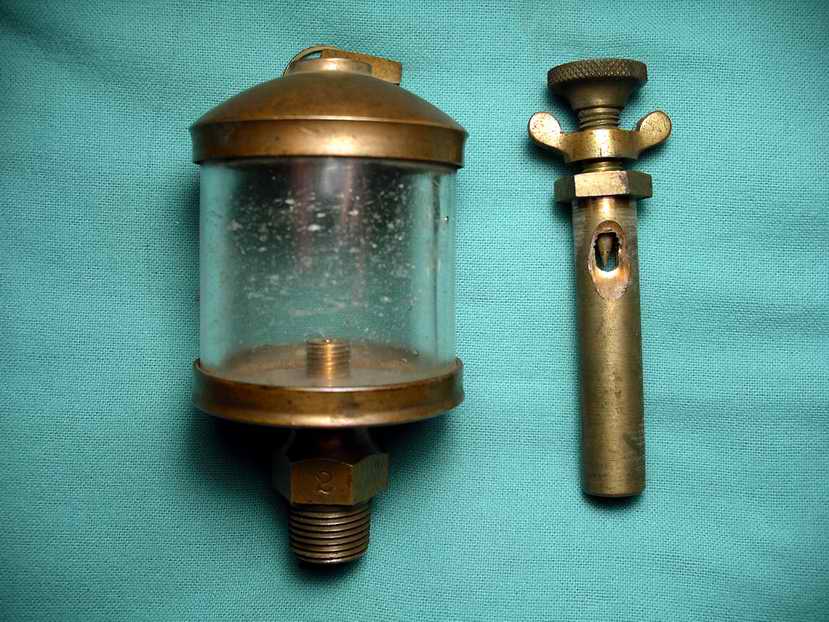 |
    
ernie
Senior Member
Username: ernie
Post Number: 1112
Registered: 01-2002

| | Posted on Thursday, December 03, 2009 - 07:51 am: | 




|
Has anyone seen ones like on the Regal? Not pics real ones? |
    
thomas
Senior Member
Username: thomas
Post Number: 354
Registered: 07-2002

| | Posted on Saturday, December 05, 2009 - 02:04 pm: | 




|
Searcher, I see the needle valve in your picture. What does it seat into? It appears that the stub with threads in the bottom of the oiler (inside) has a needle valve seat??
I have to think the drawing of the Regal twin has those oilers wrong. I could see something close to that if there was a mechanical lubricator. Just my 2 cents
Tom |
    
searcher
Senior Member
Username: searcher
Post Number: 378
Registered: 10-2004
| | Posted on Saturday, December 05, 2009 - 03:51 pm: | 




|
If the needle valve that you see was screwed in another 3/16" it would be tight against its seat. The bore diameter from the seat down the length of the tube is the same bore diameter as you can see in the stub with threads. This is a Pinnacle oil cup and it was used for crank pins.
The Petrel oil cup was used for slides, cross-heads, etc. The Petrel is the exact same oil cup as the Pinnacle except the needle valve is longer and the oil passage into the tube is at the bottom of the oil cup instead of the top. So everything for the two oil cups came from the same parts bins except for the tube and the needle valve.
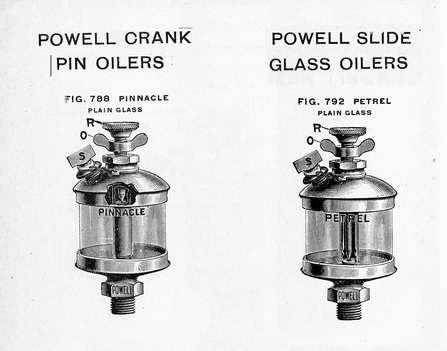 |
    
searcher
Senior Member
Username: searcher
Post Number: 379
Registered: 10-2004
| | Posted on Saturday, December 05, 2009 - 04:15 pm: | 




|
Richard's comment about oil injectors in post 2247 above got me thinking. The tops of those things do look like plunger type pumps. I suppose the intention could have been to use the pump to pressurize the oil cup with air. Oil would then be forced up into the top of the sight glass where the drip rate can be monitored and adjusted in the normal way. Seems a hard way to do things, but then, I cannot imagine Regal allowing such an obvious anomaly slip by if it was an engraver's error. Oil cups would have been ubiquitous at the time and anything that wrong about an oil cup would have stood out like a sore thumb to almost anyone. |
    
robert
Senior Member
Username: robert
Post Number: 306
Registered: 07-2003
| | Posted on Sunday, December 06, 2009 - 01:12 pm: | 




|
I think I see a steel check ball in the usual place in the above photo, so perhaps I'm misunderstanding, but how could the oil be forced up by pressure? My guess would be this type of cup was used on cranks of large, low RPM engines, probably horizontal ones, and that the swing of the crank throws would slosh the oil up through the apertures and down past the needle valve. |
    
searcher
Senior Member
Username: searcher
Post Number: 382
Registered: 10-2004
| | Posted on Sunday, December 06, 2009 - 01:26 pm: | 




|
Robert,
I didn't make it very clear which oil cups I was talking about. The two Powell's above have no check balls as there is no back pressure in the application they are intended for. The Pinnacle oil feed comes by way of oil getting thrown to the top of the oil cup as you say and the Petrel oil feed comes by way of oil draining from the bottom of the oil cup. My comments relating to pressure pertain to those two oil cups on the Regal further back in this thread. I'm just speculating about those two birds, they are total unknows to me. |
    
searcher
Senior Member
Username: searcher
Post Number: 393
Registered: 10-2004
| | Posted on Friday, December 11, 2009 - 11:01 am: | 




|
Being self employed I don't always listen to what the boss side of me says. So, too often I have a penchant to drift from working to recreational reading and research. In this instance, a c.1908 Truscott catalog has me sidetracked - its a gold mine.
This photo isn't great because the catalog pages have yellowed badly and the engaving itself rather low quality. Nevertheless, there is no doubt that both the engraver and Richard Durgee got it absolutely right. The two oil cups on the Regal are pressure fed. Now, wouldn't a pair of those make a nice stocking stuffer?
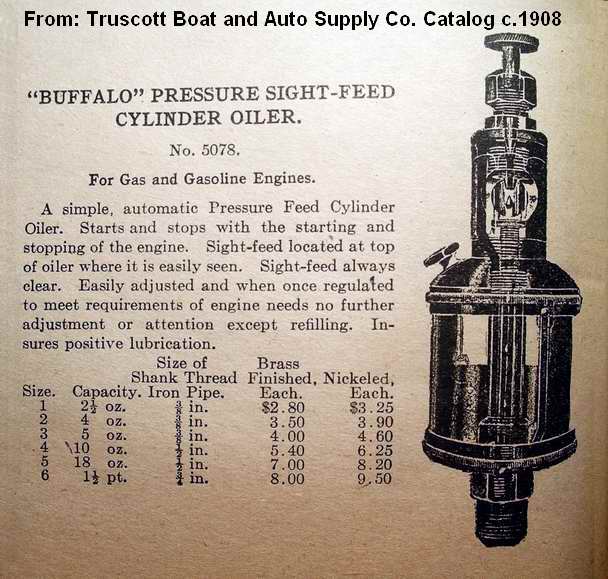 |
    
ernie
Senior Member
Username: ernie
Post Number: 1131
Registered: 01-2002

| | Posted on Friday, December 11, 2009 - 12:06 pm: | 




|
Thats cool
Searcher will you please order me 10 of size 1
Thanks
Ernie |
    
searcher
Senior Member
Username: searcher
Post Number: 394
Registered: 10-2004
| | Posted on Friday, December 11, 2009 - 12:25 pm: | 




|
Here is the ordering procedure. You will have to hurry if you want them for stocking stuffers.
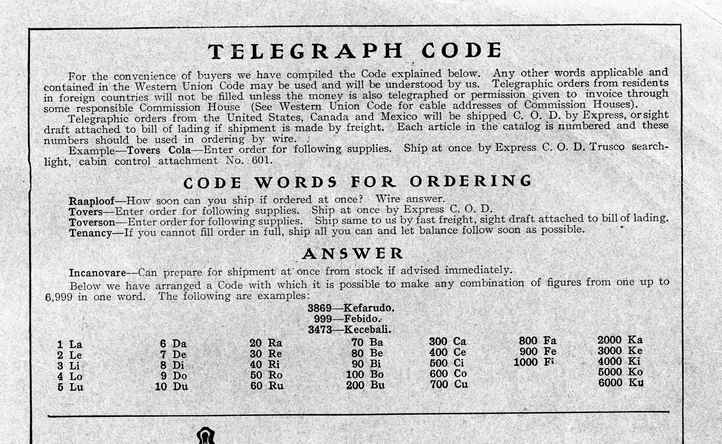 |
    
ernie
Senior Member
Username: ernie
Post Number: 1132
Registered: 01-2002

| | Posted on Friday, December 11, 2009 - 01:36 pm: | 




|
Yea but isn't the telegraph like e-mail?
If so delivery whouldn't be an issue. I will use Toverson when I order
Thanks
Ernie |
    
richardday
Senior Member
Username: richardday
Post Number: 833
Registered: 11-2003

| | Posted on Friday, December 11, 2009 - 04:59 pm: | 




|
As I understand the theory of the Lathrop pump lubricator on the crankcase side plate was before starting one gave each crank several shots of lube oil. When running the two drip oilers on each cylinder wall dripped oil into the cylinder to lubricate the upper wall and piston and through a copper tube to the lower crankcase where it dripped oil into a collector ring on the crankchaft which in turn forced oil into the throw of the crankshaft to lubricate the con rod big end. I can remember as a kid a man at the local yacht club had a big Lathrop one lunger and he mixed oil in the fuel just like we did in the outboard. Old man Lathrop didn't believe mixing oil in the fuel made sense but I expect his customers did as who wants to spend hours cleaning soot black lubricators especially as you cannot tell if they have any oil and if they are dripping. |
    
bgoss
Senior Member
Username: bgoss
Post Number: 133
Registered: 12-2007
| | Posted on Friday, December 11, 2009 - 07:55 pm: | 




|
Great work Searcher. We're a little ways off the Regal thread, but I'm glad you found that picture of the Buffalo pressure oiler.
Rather than a plunger on top to manually pump up some pressure inside the glass bowl, it appears that this "automatic" model used the crankcase pressure? Once you had set the needle valve on top, the oil would only start dripping when the engine was started.
In the cut-away drawing, it looks like they are trying to show the oil being pushed up through the tube along the left side of the sight glass to a little reservoir above the needle. The oil could then drip down at a regulated rate by gravity through the sight glass and the lower central tube.
What an interesting oiler. |
    
rholcomb
Advanced Member
Username: rholcomb
Post Number: 47
Registered: 10-2004
| | Posted on Monday, December 14, 2009 - 09:52 pm: | 




|
http://www.google.com/patents?id=ndJdAAAAEBAJ&pg=PA1&dq=cylinder+lubricator+1905 &source=gbs_selected_pages&cad=1#v=onepage&q=cylinder%20lubricator%201905&f=fals e |
    
richarddurgee
Senior Member
Username: richarddurgee
Post Number: 2255
Registered: 11-2001
| | Posted on Tuesday, December 15, 2009 - 12:53 pm: | 




|
*
A very well thought out & designed engine oiler, I learned something new ! Thanks for posting it .
** |


